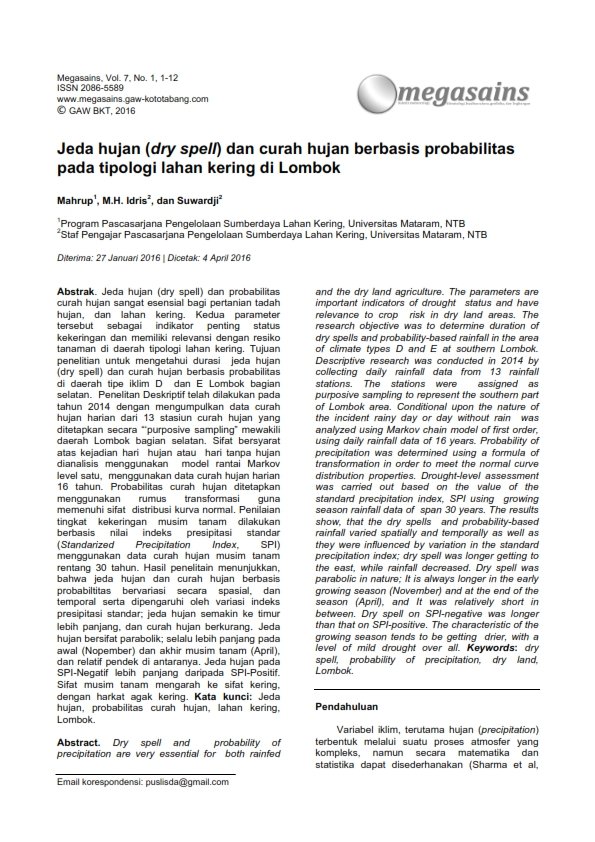Rain lag (dry spell) and probability-based rainfall on dry land typology in Lombok
Main Article Content
Abstract
Dry spell and probability of precipitation are very essential for both rainfed and the dry land agriculture. The parameters are important indicators of drought status and have relevance to crop risk in dry land areas. The research objective was to determine duration of dry spells and probability-based rainfall in the area of climate types D and E at southern Lombok. Descriptive research was conducted in 2014 by collecting daily rainfall data from 13 rainfall stations. The stations were assigned as purposive sampling to represent the southern part of Lombok area. Conditional upon the nature of the incident rainy day or day without rain was analyzed using Markov chain model of first order, using daily rainfall data of 16 years. Probability of precipitation was determined using a formula of transformation in order to meet the normal curve distribution properties. Drought-level assessment was carried out based on the value of the standard precipitation index, SPI using growing season rainfall data of span 30 years. The results show, that the dry spells and probability-based rainfall varied spatially and temporally as well as they were influenced by variation in the standard precipitation index; dry spell was longer getting to the east, while rainfall decreased. Dry spell was parabolic in nature; It is always longer in the early growing season (November) and at the end of the season (April), and It was relatively short in between. Dry spell on SPI-negative was longer than that on SPI-positive. The characteristic of the growing season tends to be getting drier, with a level of mild drought over all.
Article Details

This work is licensed under a Creative Commons Attribution-NonCommercial 4.0 International License.
The author is willing to retain the copyright and grant journal rights to the first publication with works that are simultaneously under license the Creative Commons Attribution-NonCommercial-NoDerivatives 4.0 International. It allowing the others to share the work with recognition of the author's work and the initial publication in this journal.
Authors can enter into separate additional contractual arrangements for the non-exclusive distribution of published versions of journal works (for example, posting them to institutional repositories or publishing them in a book), with recognition of the initial publications in this journal.
Authors are permitted and encouraged to send their work online (for example, in their institutional repositories or websites) before and during the submission process because it can lead to productive exchanges, as well as previous and larger citations of published works.

